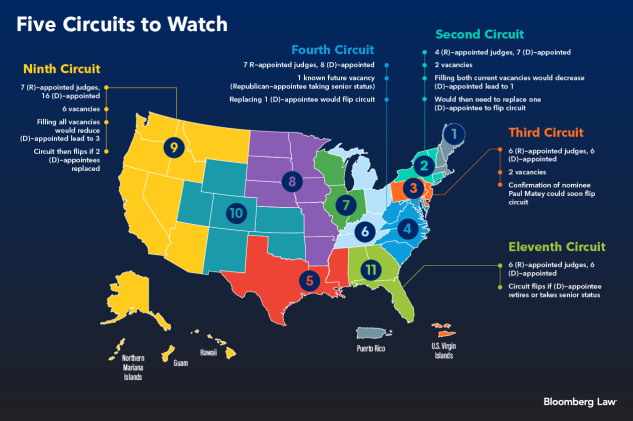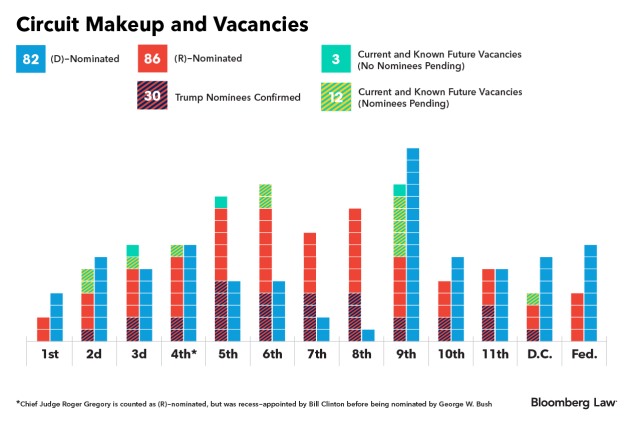President Donald Trump’s remarkable record of appointing conservative judges is leading to a dramatic shift in the make-up of several federal appeals courts.
The Second, Third, Fourth, and Eleventh Circuits, whose territory ranges from Vermont to Florida, could all soon have a majority of Republican appointees.
Even the Ninth Circuit, which has stymied Trump’s orders on immigration and environmental policies, is within striking distance of flipping its seats to a majority of Republican appointees.
The 13 federal appellate circuits are the highest courts that most federal legal arguments reach. Few cases proceed to the next level, the Supreme ...
Learn more about Bloomberg Law or Log In to keep reading:
See Breaking News in Context
Bloomberg Law provides trusted coverage of current events enhanced with legal analysis.
Already a subscriber?
Log in to keep reading or access research tools and resources.


